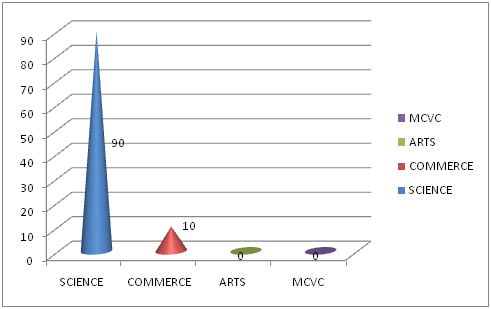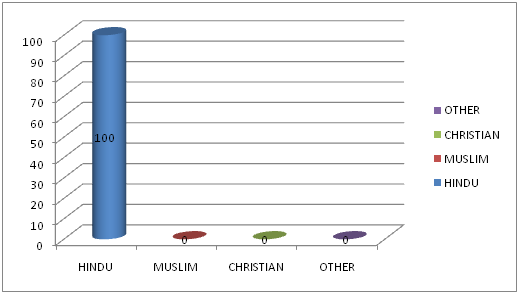eISSN: 2572-8474


The cardiopulmonary resuscitation (CPR) guidelines of compression-only life support (COLS) for management of the victim with cardiopulmonary arrest in adults provide a stepwise algorithmic approach for optimal outcome of the victim outside the hospital by untrained laypersons. “A study to assess the knowledge regarding Cardiopulmonary resuscitation(CPR) among 1st Year GNM (diploma nursing students) students studying in SND College of nursing with a view to develop an information booklet”. Objectives are to assess the knowledge regarding CPR among 1st Year GNM students. To find out the association between knowledge scores with their selected demographic variables & to prepare an information booklet. 50 samples were included in the study who all are fits in inclusive criteria, this is a descriptive design and analysis were done by using inferential statistics. The finding clearly shows that there is no one student had poor knowledge regarding CPR among the 1st year RGNM students. There is 38% of adequate knowledge regarding CPR and the majority of 62% students having good knowledge about cardiopulmonary resuscitation (CPR). No one students of diploma nursing (GNM) belongs to nil knowledge regarding CPR. The study concludes that the GNM students required more knowledge and skill regarding CPR to practice effectively to save life of a victim. Even though majority of the GNM (diploma nursing students) had good knowledge but still perfection is required to practice it whenever needed in emergency.
Keywords: CPR, GNM (diploma nursing students) students, AHA and knowledge
Cardiopulmonary resuscitation is a lifesaving technique for victims of sudden cardiac arrest. Despite advances in resuscitation science, basic life support remains a critical factor in determining outcomes. The American Heart Association recommendations for adult basic life support incorporate the most recently published evidence and serve as the basis for education and training for laypeople and healthcare providers who perform cardiopulmonary resuscitation. The cardiopulmonary resuscitation (CPR) guidelines of compression-only life support (COLS) for management of the victim with cardiopulmonary arrest in adults provide a stepwise algorithmic approach for optimal outcome of the victim outside the hospital by untrained laypersons. These guidelines have been developed to recommend practical, uniform and acceptable resuscitation algorithms across India. As resuscitation data of the Indian population are inadequate, these guidelines have been based on international literature. The guidelines have been recommended after discussion among Indian experts and the recommendations modified to ensure its practical applicability across the country.1
According to statistics nearly 7.5 lakh people die of sudden cardiac arrests every year in India. On an average, a victim begins to suffer irreversible brain damage four minutes after the cardiac arrest takes place and if no CPR administered.2 For every minute that a cardiac arrest victim does not receive CPR, his chances of survival drops by 10 per cent. An effective CPR from a bystander can double a victim`s chances of surviving a cardiac arrest. While several countries across the world are training the common man - in schools, colleges and work places about chest compressions or CPR to save sudden cardiac victims from dying, the World Heart Federation (WHF) says less than one per cent Indians would presently know how to carry out a CPR.3–5
A study was conducted by Prafulla A.Salunkhe to explore the Effectiveness of Demonstration Regarding Cardiopulmonary Resuscitation on Knowledge and Practice among Policemen, Quantitative research approach and one group pre-test and post-test design was used Non-probability convenient sampling method was used to select 50 policemen as a study subjects. .Conclusion- equal positive response to the demonstration and teaching was found really useful to them, which will help them to take prompt decisions, perform cardiopulmonary resuscitation and save many lives of out-of-hospitals cardiac arrest victims.6–10
A study to assess the knowledge regarding Cardiopulmonary resuscitation(CPR) among 1st Year GNM students studying in SND College of nursing with a view to develop an information booklet.
Knowledge
In this study it refers to understanding the knowledge of the 1st year RGNM students regarding cardiopulmonary resuscitation.
Cardiopulmonary resuscitation
Assumptions
Variables
Hypothesis
H1: There is a significant association between the selected demographic variables and knowledge score of 1st Year RGNM students.
H2: - There will be no relationship between demographic variables and Knowledge on CPR among RGNM students.
Delimitations
Methodology of research indicates the general pattern of organizing the procedure for gathering valid and reliable data for problems under investigation.
Source of data
The data will be collected from 1st year RGNM student in S.N.D College of Nursing at Yeola.
Descriptive Design.
Research approach
To assess the knowledge regarding CPR among the 1st year RGNM students.
Setting
The study will be conducted in 1st year RGNM students.
Population
The population for the study comprises of 1st year RGNM student in Yeola.
Methods of data collection
Sampling procedure
1st year RGNM student will be selected by using convenient sampling technique.
Sampling size
The sample for the study would consist of 50 in 1st year RGNM student.
Inclusive criteria
Both male and female included in this study,
Exclusive criteria
Instruments intended to be used
The findings were presented under the following headline
The above table reveals that out of 50, the age group 21 to 25 undergone the 45(Table 1) students, about 90% percentages. In the age group 25 to 30 the frequency is 5 and the percentage is 10. In the age group 30 and above about 0%. Graphs 1–4
Age |
Frequency |
Parentage |
21-25 |
45 |
90 |
25-30 |
5 |
10 |
30 & Above |
0 |
0 |
Total |
50 |
100 |
Gender |
Frequency |
Percentage |
Male |
17 |
34 |
Female |
33 |
66 |
Total |
50 |
100 |
Educational qualification |
Frequency |
Percentage |
Science |
45 |
90 |
Commers |
0 |
0 |
Arts |
5 |
10 |
Mcvc |
0 |
0 |
Total |
50 |
100 |
Religion |
Frequency |
PERSENTAGE |
Hindu |
50 |
100 |
Muslim |
0 |
0 |
Christian |
0 |
0 |
Other |
0 |
0 |
Total |
50 |
100 |
CNE Participation |
Frequency |
Percentage |
YES |
0 |
0 |
NO |
50 |
100 |
TOTAL |
50 |
100 |
Table 1 Frequency& percentage distribution of 1st year RGNM student according to the age

Graph 3 The above table revels that majority of the respondents 50(100%) were Hindu, 0(0%) were Muslim, 0(0%) were Christian, 0(0%) were other.

Graph 4 The above table revels that, 0(0%) of the respondent were yes, 50(100%) and remaining of the respondent were No.
Plan for data analysis
The analysis of data involves the translation of information collected during the course of research project into an interpretable and manageable form. It involves the use of statistical procedure to give an organisational meaning of the data. The descriptive and the inferential statistics will be used for data analysis. Table 2 The various categories for analysis numerical data based on the objective on the study on given below.
Marks [Gread] |
Frequency |
Percentage |
0-6 (Poor) |
0 |
0 |
7-14 (Average) |
19 |
38 |
14-20 (Good) |
31 |
62 |
Total |
50 |
100 |
Table 2 Knowledge score categorized
The findings clearly show that there is no one student had poor knowledge regarding CPR among the 1st year RGNM students. Graph 5 There is 38% of adequate knowledge regarding CPR and the majority of 62% students having good knowledge about cardiopulmonary resuscitation (CPR).
The findings indicate that the GNM students required more knowledge and skill regarding CPR to practice effectively to save life of a victim. Even though majority of the GNM (diploma nursing students) had good knowledge but still perfection is required to practice it whenever needed in emergency.
Permission got from principal SND College of Nursing.
Self
We would like to thank our beloved management Mr. Narendraji Darade, Mr. Kishoreji Darade, Principal Prof. Neethi Selvam, Mr. Prashant H.J and our entire faculty.
The author declares that there is no conflict of interest.

© . This is an open access article distributed under the terms of the, which permits unrestricted use, distribution, and build upon your work non-commercially.